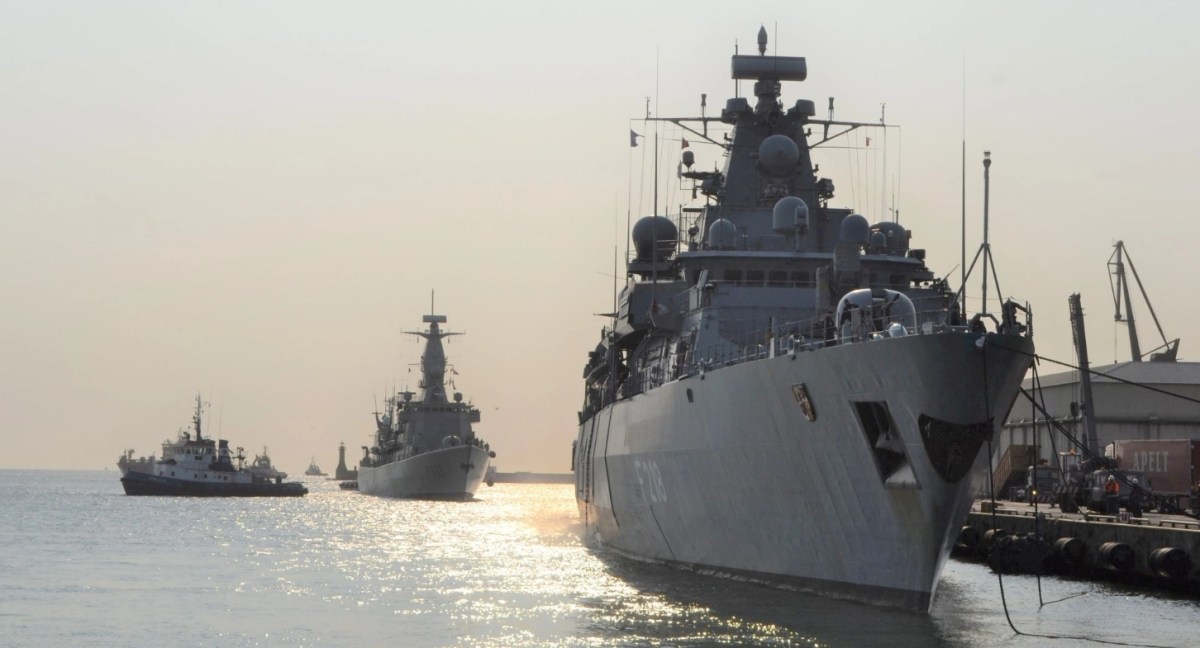
Heading to Gdynia, the ship team consisting of frigates passed the Italian missile destroyer Caio Duilio, which entered the Naval Port of Gdynia last Saturday and then went to perform statutory tasks related to the protection of the Polish coast, as agreed under agreements between the Polish and Italian Ministries. During their stay in Gdynia, the allied team's ships will replenish supplies and the crews will be able to rest. Their stay will last until May 30. It can be expected that, as in the case of the Italian ship, the command staff of SNMG-1, headed by counter admiral Thorsten Max at the head.
The first to enter was the group's flagship, the German frigate FGS Mecklenburg-Vorpommern (F 218), which moored at the French Quay. Since the frigate also serves as a command unit, it houses the headquarters of the multinational team along with its commander.
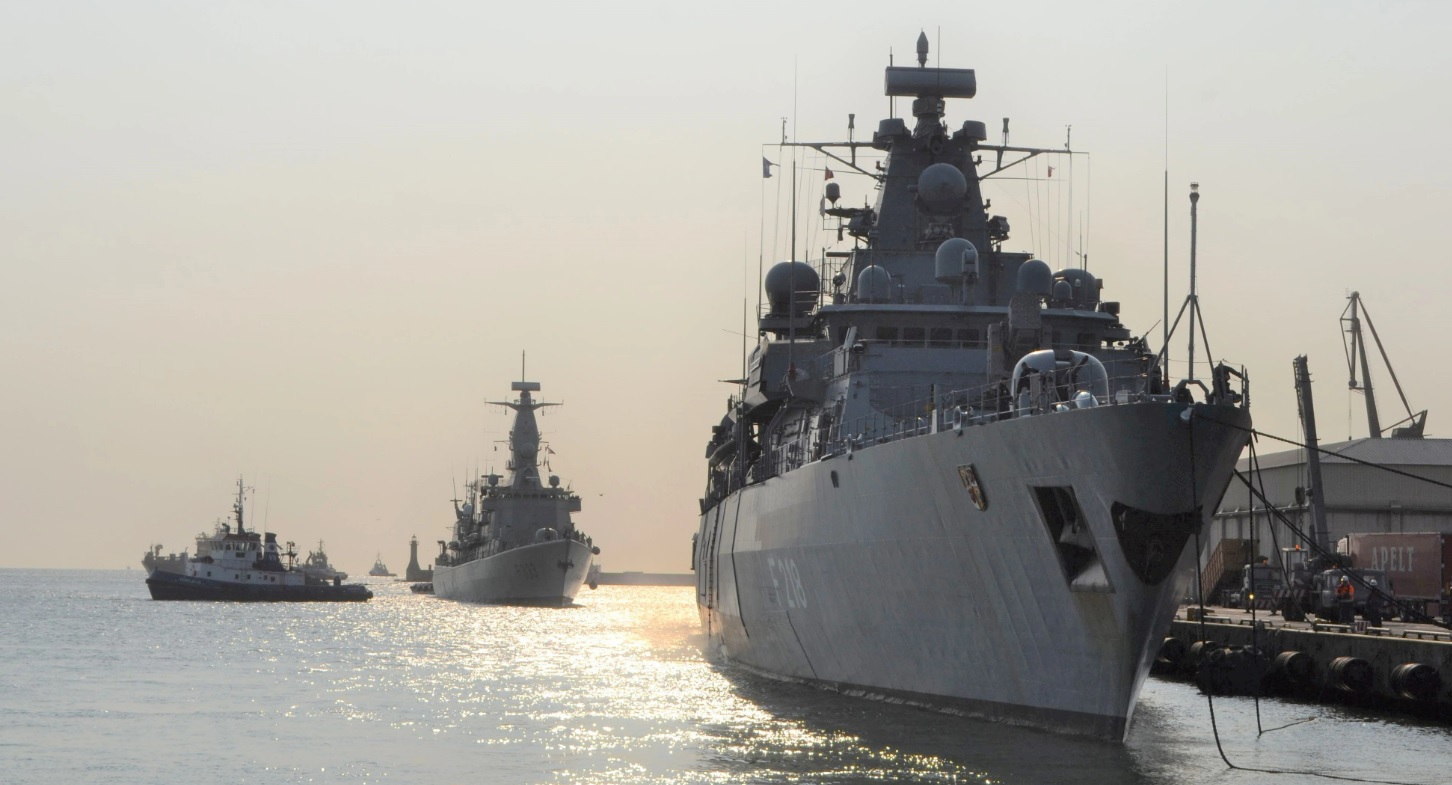
Also at the French Quay stopped the Portuguese frigate NRP Bartolomeu Dias (F333), which entered Gdynia shortly after the team's flagship. This is a vessel that served with the Royal Netherlands Navy (Koninklijke Marine) as Van Nes from 1994 to 2007. Ship was transferred to the Portuguese Navy in 2009.
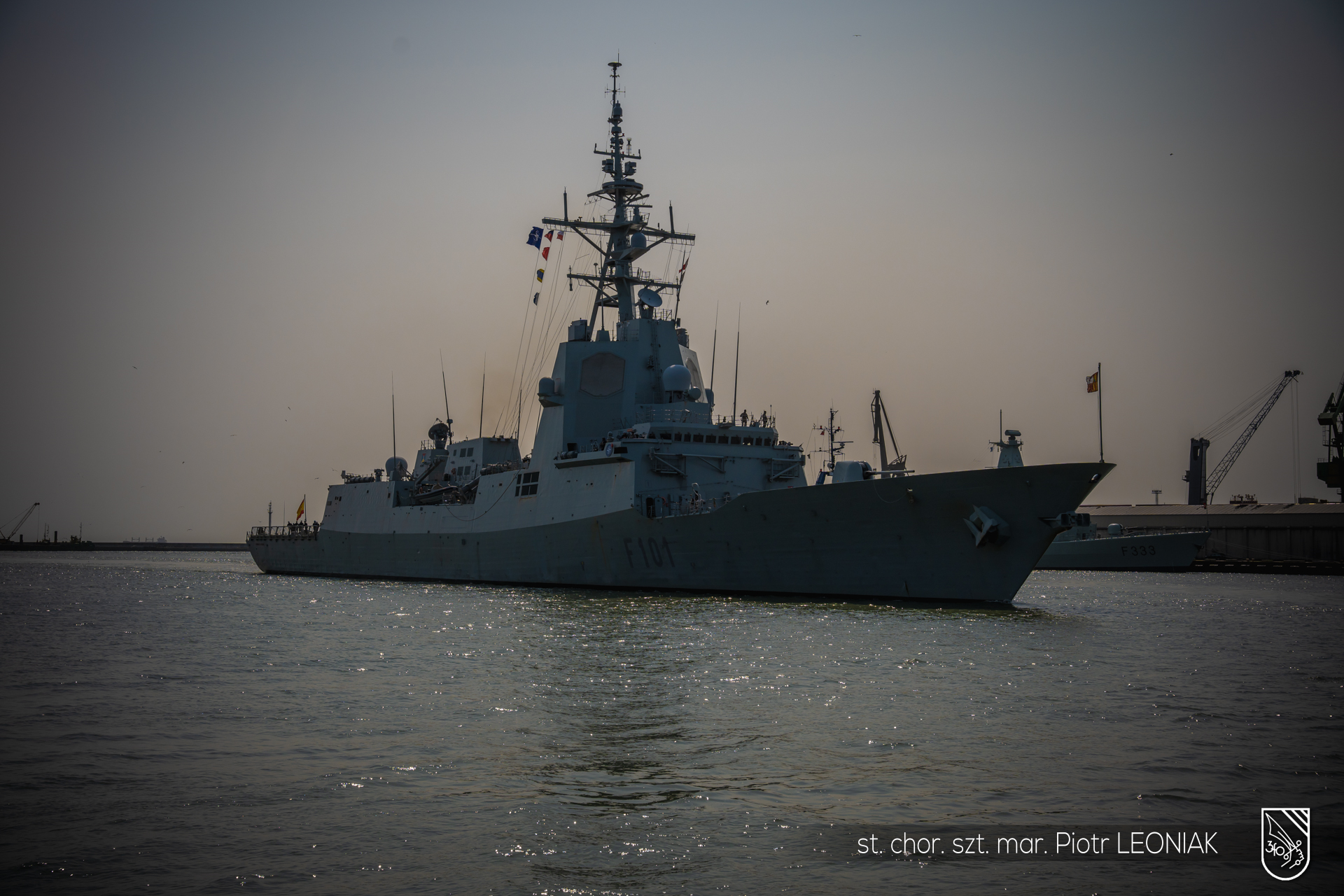
The Dutch Karel Doorman type missile frigate HNLMS Van Amstel (F 831) entered as the third ship, which in turn moored at the United States Wharf. Ship has been in service since 1993.
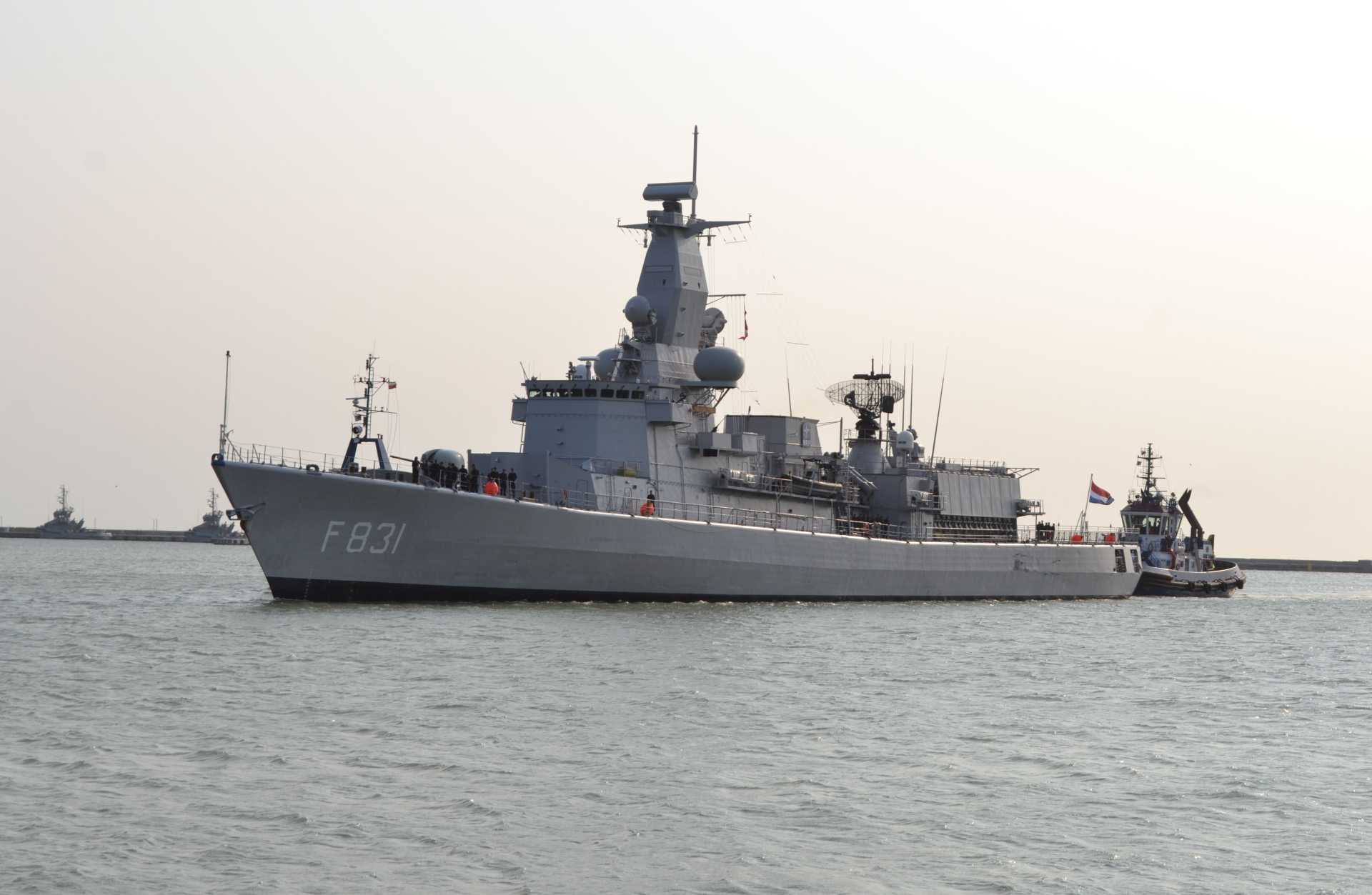
Certainly awaited by many was the entry of the missile frigate ORP Gen. Tadeusz Kościuszko, which departed for its mission within SNMG-1 in January this year. Unlike the other three vessels, the Polish ship stopped at the Naval Port of Gdynia. This is its first visit to its home port since departing for its mission as "PKW Kościuszko".
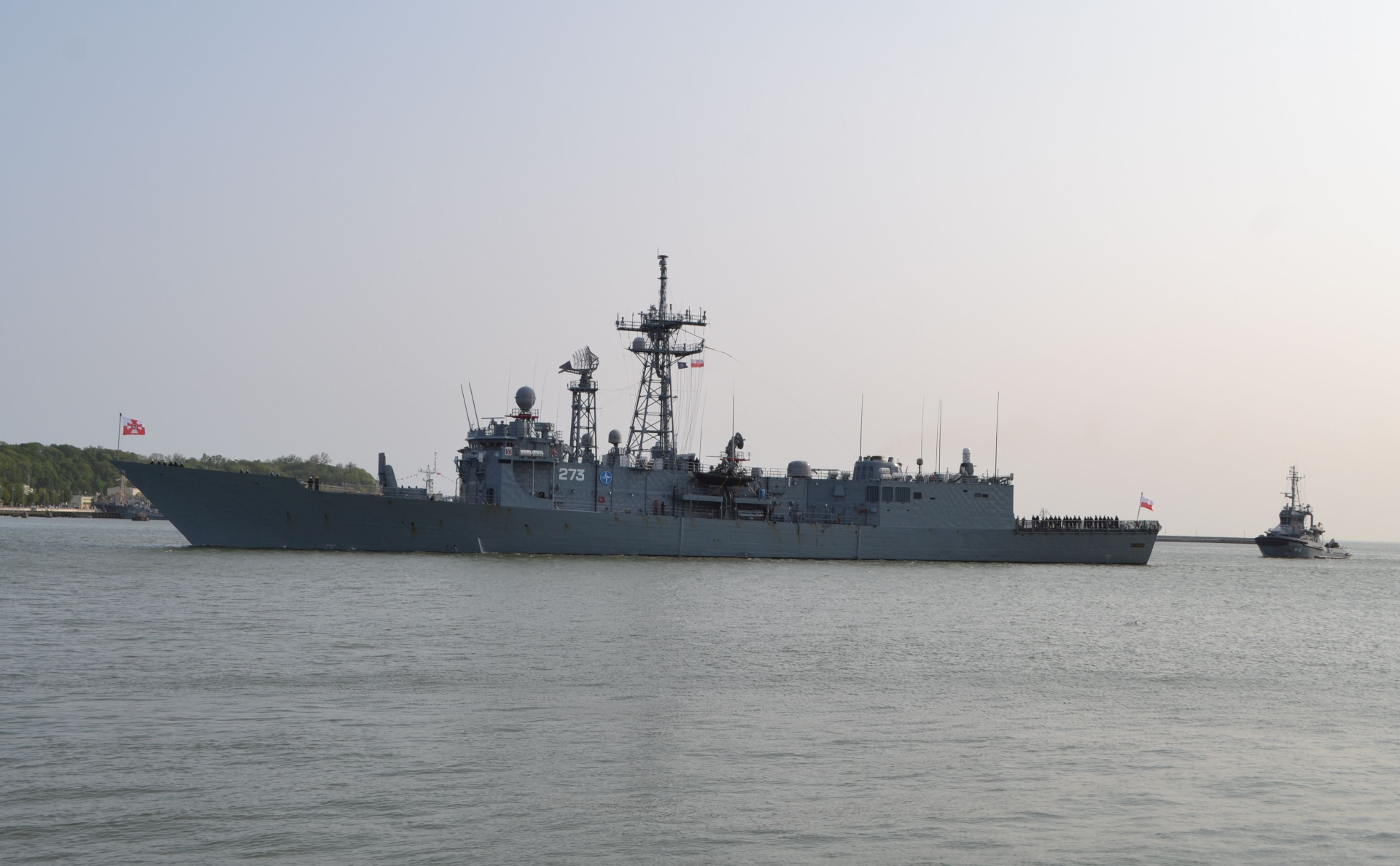
The last to enter Gdynia was the spanish missile frigate ESP Álvaro de Bazán (F101), which, like the Polish ship, docked at the Naval Port of Gdynia. She is the first of five frigates in a series named after her, based on the F100 platform. Three Australian Hobart-type frigates are also based on it. Spanish ship has been in service since 2002.
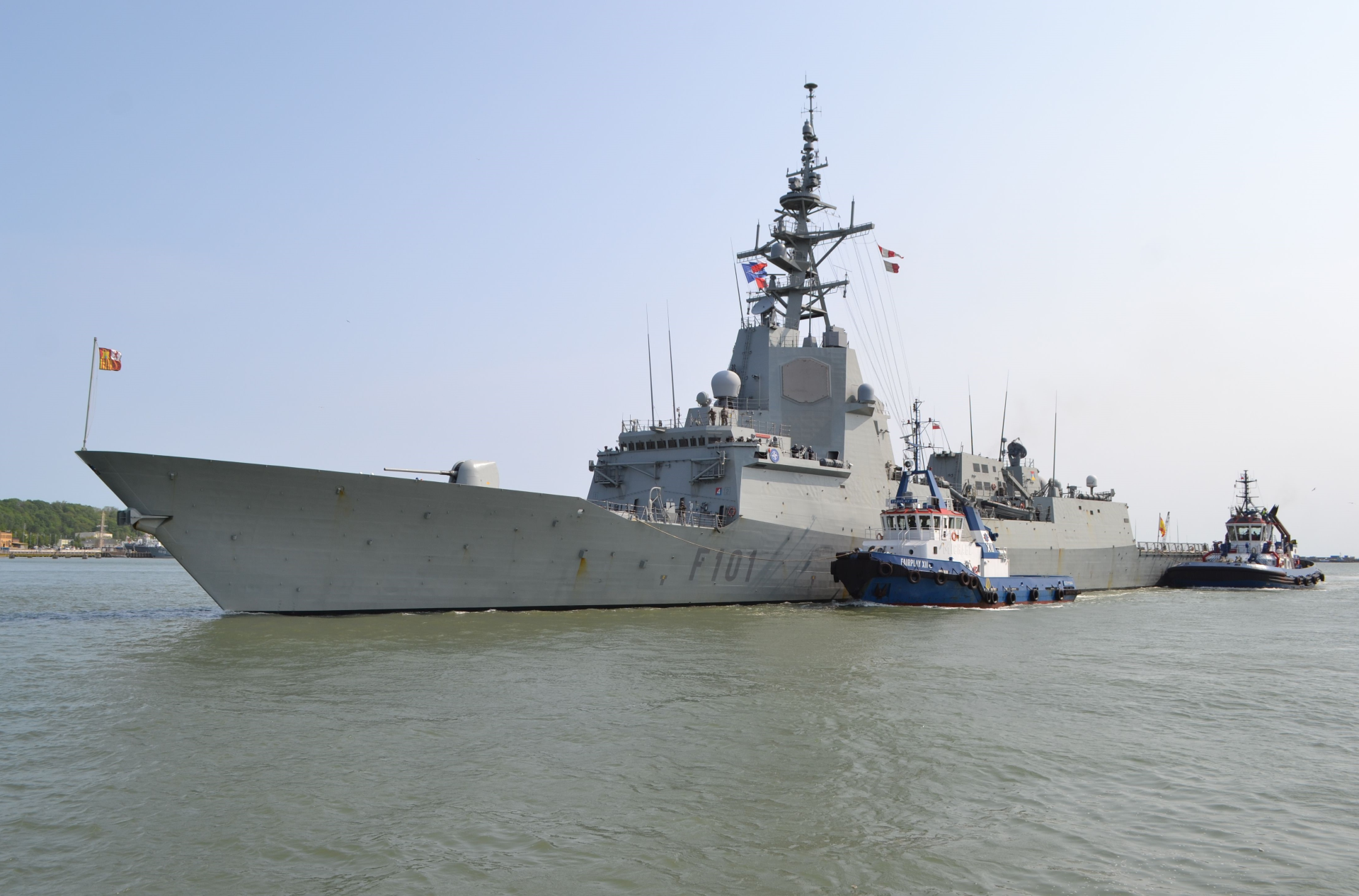
SNMG-1 is one of the two permanent ship teams of the North Atlantic Alliance, comprising destroyers and frigates of member states. The backbone of the team is made up of units from the US, Canada, the UK, Germany and the Netherlands, which are periodically joined by ships from Belgium, Denmark, Portugal, Spain and Poland. It conducts exercises both as part of the team and with ships of the naval forces of NATO and "Partnership for Peace" member states. It is charged with ensuring the safety of shipping lanes in the Baltic Sea, the North Sea, the Norwegian Sea, the Mediterranean Sea and the eastern Atlantic Ocean. The main tasks of the entire team are primarily to monitor important strategic shipping lanes to ensure the free flow of raw materials to European countries.


